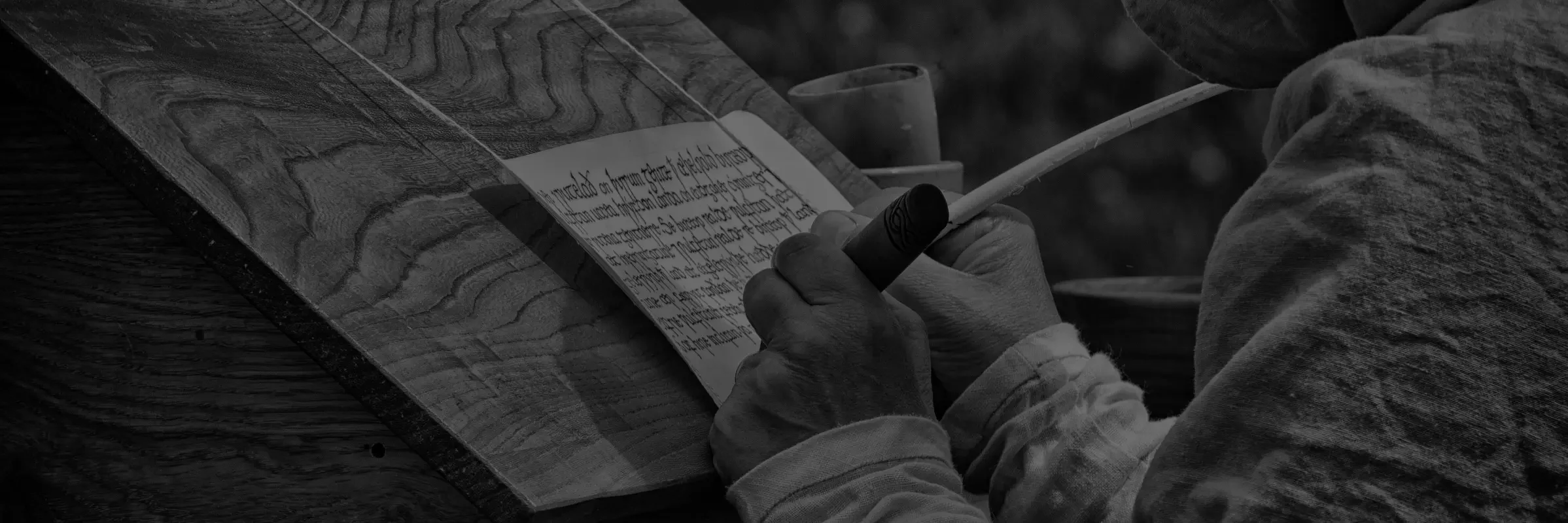Wirral's Hidden History Revealed
Hengist and Horsa
Hengist and horsa, founders of the english people or mythical Legend? Legend states that the Germanic brothers Hengist and Horsa were the leaders of warbands of Saxons, Jutes and Angles who invaded post Roman Britain in the 5th century. Sources state that they had landed at Ebbsfleet (Eopwinesfleot) on the Isle of Thanet and that they had been employed by the British…
Post Conquest Fyrd
It is often assumed that after the Norman conquest, that many Anglo-Saxon institutions became redundant or were replaced by others, of Norman origin.
Paris Siege – 885-886 AD
In the recent TV series Vikings, Ragnar Lothbrok’s attack on Paris was a visual masterpiece in portraying a dramatic and brutal fight which was certainly entertaining, but what really happened? Was the film a true representation of what had occurred?
Offa
Offa became King of Mercia in 757 AD. The son of Thingfrith, he claimed descent from Eowa, the brother of Penda, the great pagan King of Mercia who defeated the Christian Northumbrian King, Oswald at the battle of Maserfield in 641 or 642 AD
Eric Bloodaxe
Hail to you Eric, be welcome here and come into the hall, gallant King. The Eiriksmal So reads the epitaph, the Eiriksmal, written by an unknown Norse poet in the service of Eric’s widowed wife.
Constantinople 860AD
On the 18th of October 860 AD, the city guards of the great city of Constantinople were alerted to a fleet of over 200 longships appearing on the horizon. They had entered the Bosporus from the Black Sea. The city’s warning bells rang out and the guards stationed at the many gates of the city prepared to close and bar the entry…
THE BATTLE OF NORTHAM JUNE 1069
The battle of Northam took place between the north Devon villages of Appledore and Northam in 1069. Two sons of Harold Godwinson, the English King killed at Hastings on the 14th of October 1066, namely Godwin and Edmund, returned to England with the intent of initiating an Anglo-Saxon rebellion to overthrow the Norman King, William.
The Harrying of the North.
After Duke William’s victory at the battle of Hastings on the 14th of October 1066 there is a general acceptance that England was completely subjugated by the Normans and that the English population was totally pacified. This was not the case and the Normans would pay a high price in both blood and treasure to finally establish dominance.
Arthur – Once And Future King
Of all the myths and legends of Britain the most enigmatic and intriguing hero is Arthur. Forget the late romantic versions of the later medieval period, the knights of the round table, Camelot, Gwynevere, Lancalot, the Green Knight and a hundred and one other mystical and mythical characters and instead, look for a late Romano warlord who, for a generation, halted the Saxon advance into the west of Britain.
Ingimunds Attack On Chester 907AD
In 907 AD, Ingimund, a Hiberno-Norse chieftain, who had been allowed to settle on the north Wirral coast by Aethelflaed, sometime in 902, led an attack on the city of Chester.
Battle of Fulford Gate
Of the 3 major battles of the momentous year of 1066, the battle which took place at Fulford is the least known, yet it was a fierce engagement and one that must have weakened the Viking army led by their infamous leader, King Harald Hardrada of Norway.
The Coming of the Anglo Saxons
In the twilight years of the Roman province of Britannia the Roman Emperor Honorius advised the Romano British to look to their own defence of the land as he withdrew the last of the Roman military from the island.
Barbarian tribes were on the move throughout Europe and decades of economic and military disasters would bring about the downfall of western Empire, albeit, it would be 476AD, before the last western Emperor, Romulus Augustulus was forced to abdicate and to retire into obscurity by the Germanic warlord, Odoacer, who then proclaimed himself King of Italia.
Ragnar Lodbrok – Man, Myth or Tall Story
The popular TV series ‘VIKINGS’ has ignited a renewed interest in the period of early medieval history and whilst entertaining, many of the characters are fictitious and most of the events never occurred in the fashion in which they have been portrayed even if they occurred at all.
Battle of Anglesey Sound
Magnus Barelegs and the Vikings in Anglesey and the battle of Anglesey sound 1098 AD
Following the Norman conquest of Anglo-Saxon England in 1066, there is a mistaken belief that Viking activities ceased in the British isles. In Scotland, the Viking age can be said to have come to its final end, following the battle of Largs in 1263.
The Battle of Cynwit
The defeat of Ubba Ragnarsson and the Vikings
The battle of Cynwit is a little known engagement yet it was important for a number of reasons.
Ubba Ragnarsson, son of the legendary Ragnar Ladbrok and brother to Ivar the boneless, Halfdan Ragnarsson, Sigurd snake in the eye, Hvitserk and Bjorn Ironside, landed with an army in Devon. The Vikings are said to have arrived in a fleet of 23 ships and to have numbered 1200 men.

